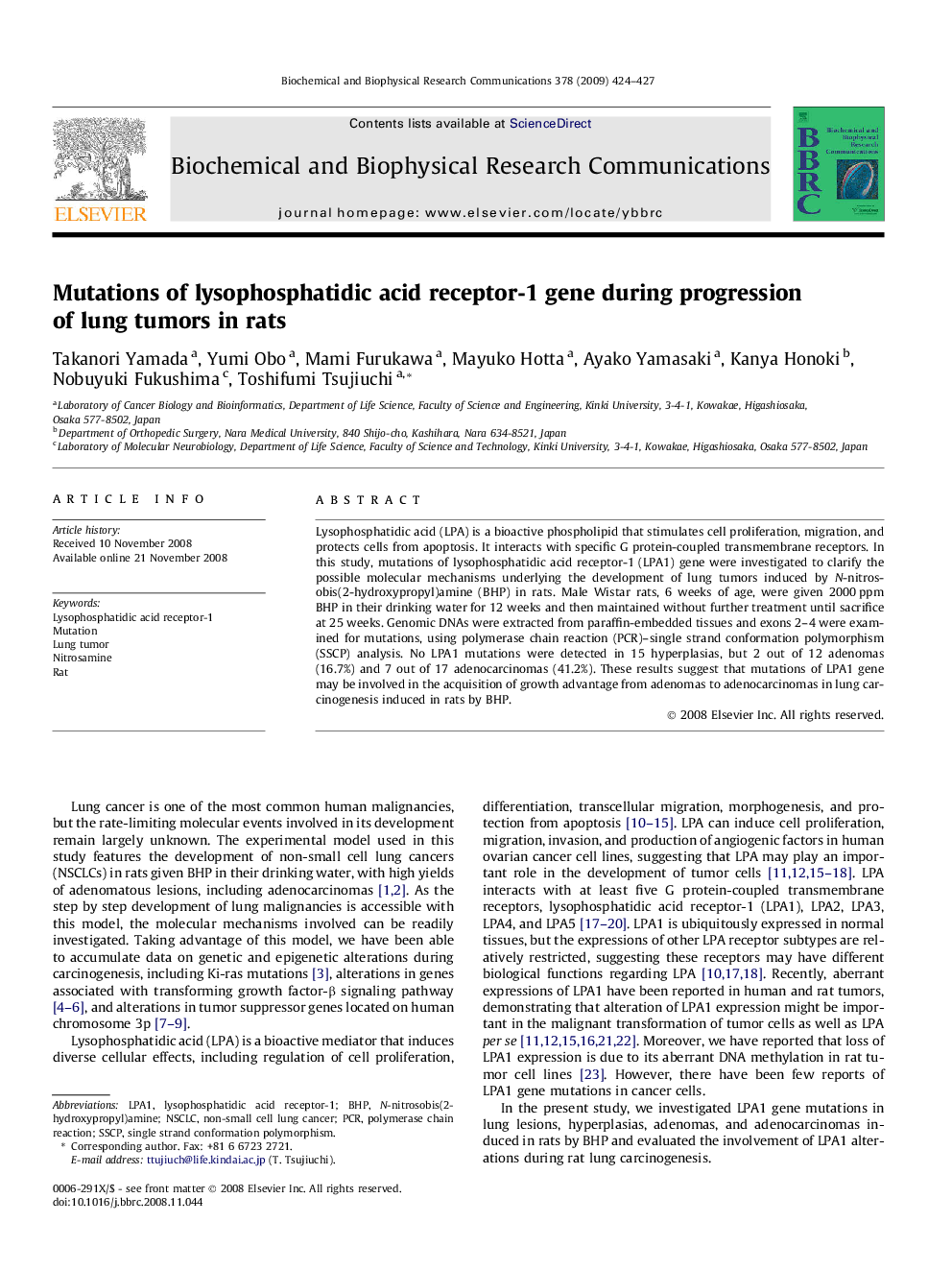| Article ID | Journal | Published Year | Pages | File Type |
|---|---|---|---|---|
| 1934552 | Biochemical and Biophysical Research Communications | 2009 | 4 Pages |
Lysophosphatidic acid (LPA) is a bioactive phospholipid that stimulates cell proliferation, migration, and protects cells from apoptosis. It interacts with specific G protein-coupled transmembrane receptors. In this study, mutations of lysophosphatidic acid receptor-1 (LPA1) gene were investigated to clarify the possible molecular mechanisms underlying the development of lung tumors induced by N-nitrosobis(2-hydroxypropyl)amine (BHP) in rats. Male Wistar rats, 6 weeks of age, were given 2000 ppm BHP in their drinking water for 12 weeks and then maintained without further treatment until sacrifice at 25 weeks. Genomic DNAs were extracted from paraffin-embedded tissues and exons 2–4 were examined for mutations, using polymerase chain reaction (PCR)–single strand conformation polymorphism (SSCP) analysis. No LPA1 mutations were detected in 15 hyperplasias, but 2 out of 12 adenomas (16.7%) and 7 out of 17 adenocarcinomas (41.2%). These results suggest that mutations of LPA1 gene may be involved in the acquisition of growth advantage from adenomas to adenocarcinomas in lung carcinogenesis induced in rats by BHP.
